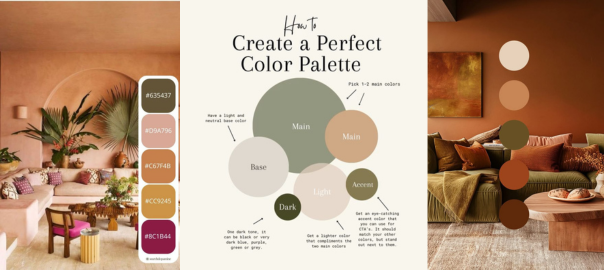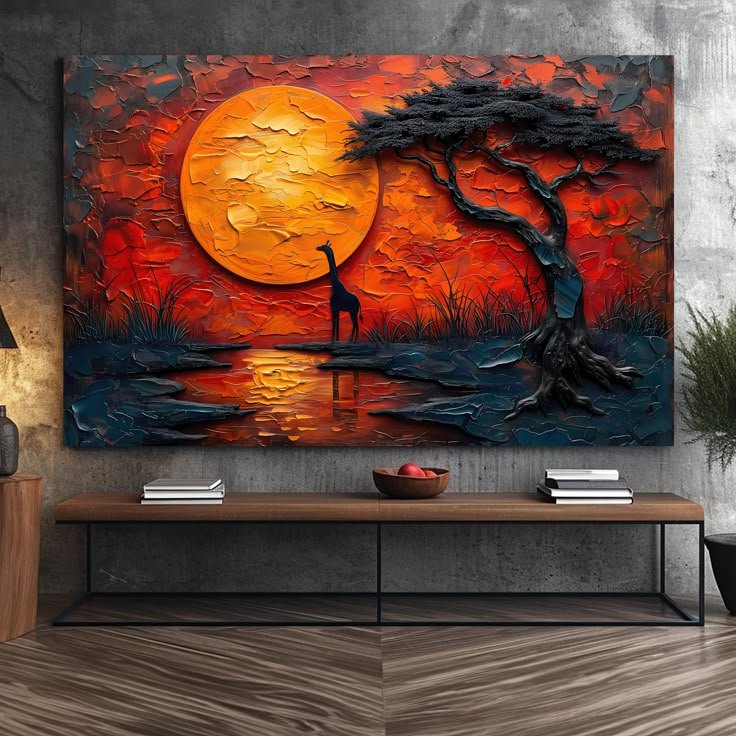Creating a beautiful, cohesive home doesn’t mean you need to redecorate every season. The secret is a capsule color palette—a carefully curated set of colors that work together to create harmony and style in your home. Whether you’re into modern minimalism, cozy cottage vibes, or bold maximalist statements, a capsule color palette helps you make confident design choices while keeping your home chic and timeless.
If you’ve ever stared at paint swatches and felt overwhelmed, this guide will make it simple. From choosing a base color to layering accent hues, we’ll walk you through every step to build a capsule color palette that reflects your personality and lifestyle.
By the end of this post, you’ll have the tools to confidently mix and match colors in your home, create visual flow, and enjoy a space that feels intentional, not chaotic.
What is a Capsule Color Palette?
A capsule color palette is a small collection of colors that form the foundation of your home’s decor. Think of it like your wardrobe—but for your walls, furniture, and accessories. Instead of choosing random colors that may clash, a capsule palette ensures every piece fits together beautifully.
Why Use a Capsule Palette?
- Cohesion: Every room feels like part of the same home.
- Simplicity: Fewer decisions mean less stress when decorating.
- Timelessness: Avoid trendy colors that may feel outdated in a year.
- Flexibility: Easily mix and match furniture, textiles, and decor items.
Internal Link Suggestion: Link to a related post on “Top 10 Interior Design Trends for 2025” to show how capsule palettes can incorporate current trends without overwhelming your space.
Step 1: Choose Your Base Color
Your base color is the foundation of your capsule palette. It’s usually a neutral shade, such as:
- White or Off-White: Creates a clean, airy feel.
- Beige or Taupe: Adds warmth without overpowering.
- Soft Gray: Modern, versatile, and timeless.
Tips for Selecting a Base Color:
- Test your color in different lighting throughout the day.
- Consider the room’s purpose—soft tones for calm spaces, warmer tones for social areas.
- Keep your lifestyle in mind—neutral colors work well if you have kids or pets.
Neutral base colors like soft grays and warm beiges create a timeless foundation for any home.
Step 2: Add Your Secondary Colors
Secondary colors complement your base color and bring personality into your space. Typically, choose 1-2 secondary colors. These can be:
- Muted Pastels: Soft blues, blush pinks, or sage greens.
- Earth Tones: Terracotta, mustard, or olive.
- Bold Hues: Deep navy, emerald, or charcoal for drama.
How to Apply Secondary Colors:
- Walls: Accent walls or specific rooms.
- Furniture: Chairs, couches, or cabinets.
- Decor: Throw pillows, rugs, or artwork.
Pro Tip: Stick to shades with similar undertones (warm or cool) for a cohesive look.
Step 3: Choose Your Accent Colors
Accent colors are the fun, playful elements that make your home unique. You can choose 1-3 accent colors from brighter or contrasting shades.
- Vibrant yellows or oranges for energy.
- Jewel tones like amethyst or sapphire for luxury vibes.
- Pastel accents for a soft, whimsical touch.
Ways to Use Accent Colors:
- Artwork or wall decor
- Lamps, cushions, or rugs
- Small furniture or decorative objects
Step 4: Test Your Palette
Before committing, it’s crucial to test your colors together:
- Collect paint samples, fabric swatches, or digital mood boards.
- Place them in the room to see how they interact in different lighting.
- Adjust tones until you find a palette that feels balanced.
Tip: Use tools like Canva, Pinterest, or apps from paint brands to visualize your palette digitally before purchasing.
Step 5: Layer Textures and Patterns
A capsule palette doesn’t have to be flat. Textures and patterns bring depth to your color scheme.
- Textures: Velvet cushions, woven rugs, wooden furniture, matte or glossy finishes.
- Patterns: Stripes, florals, geometric designs, or abstract art.
How to Layer Effectively:
- Stick to your chosen palette for all patterns.
- Mix textures (soft with rough) for visual interest.
- Keep large surfaces neutral, using textures and patterns in accents.
Step 6: Consider Room Flow
A capsule palette works best when there’s continuity between rooms. Use a base color consistently throughout your home and repeat secondary or accent colors strategically.
- Hallways can echo main color tones from living spaces.
- Kitchens and dining areas can share complementary accents.
- Bathrooms can incorporate secondary colors for a pop without feeling overwhelming.
Link to a post on “Open Concept Home Design Ideas” to illustrate how color flow enhances open spaces.
Step 7: Add Personality with Art and Decor
Now that your palette is set, inject your personal style through art and decor.
- Framed artwork or prints matching your accent colors
- Statement furniture pieces
- Handmade items, plants, or travel souvenirs
Remember: your capsule palette is a guide, not a rulebook. Don’t be afraid to introduce subtle deviations that make your home feel like you.
Artwork and decorative pieces can tie a capsule palette together while expressing your unique personality.
Tips for Maintaining a Capsule Palette
- Be intentional: Only buy items that complement your palette.
- Rotate accents seasonally: Swap cushions, rugs, or throws to refresh the look.
- Use neutrals as anchors: They prevent bold accents from clashing.
- Document your palette: Take photos of your finalized palette for future reference.
Common Mistakes to Avoid
- Too Many Colors: Stick to 5-7 colors maximum.
- Ignoring Undertones: Warm and cool shades can clash.
- Forgetting Lighting: Colors look different in natural vs. artificial light.
- Overdoing Accents: Small pops are more effective than overwhelming patterns.
FAQ Section
Q1: How many colors should a capsule palette have?
A: Typically 5–7 colors including base, secondary, and accent shades.
Q2: Can I mix bold colors in a capsule palette?
A: Absolutely! Just ensure they share similar undertones and are balanced with neutrals.
Q3: Do all rooms need the same colors?
A: Base colors should flow throughout, but secondary and accent colors can vary by room.
Q4: How do I test colors before buying?
A: Use paint samples, fabric swatches, or digital tools like Canva or Pinterest.
Q5: Can a capsule palette work in a small space?
A: Yes! It’s actually perfect for small spaces because it creates visual harmony.
Building a capsule color palette is the key to a stylish, harmonious, and personalized home. Ready to transform your space? Start experimenting with your base, secondary, and accent colors today—and watch your home come alive with cohesive style.
Pro Tip: Share your palette on social media or with friends to get feedback and discover new ways to layer colors.

